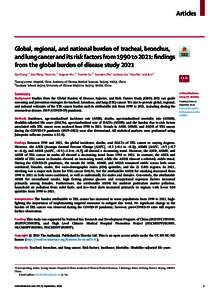Document
Prevalence and Risk Factors foVitamin D Deficiency in Children and Adolescents in the Kingdom of Bahrain
Linked Agent
Title of Periodical
Nutrients
Issue published
Nutrients 2023, 15, 494.
Country of Publication
Switzerland
Place Published
Basel
Publisher
MDPI
Date Issued
2023
Language
English
Subject
English Abstract
Abstract: Background: Vitamin D deficiency has reached pandemic levels in the Middle East and
North Africa (MENA) region, even though sunshine is abundant all year round for the cutaneous
synthesis of vitamin D through the skin. This study aimed to determine the prevalence of vitamin D
deficiency and risk factors associated with serum 25-hydroxy vitamin D (25(OH)D) in children and
adolescents aged from 10 to 19 years, as well as the possible associations of vitamin D with calcium,
magnesium and phosphate levels. Methods: A multi-center, cross-sectional study was conducted
between May and August 2019 at the Ministry of Health in the Kingdom of Bahrain. A total of
383 boys and girls were selected from five health centers from five different regions in the Kingdom of
Bahrain. Information about sex, age, education level, weight, height, degree of sunlight exposure, and
physical activity levels was recorded. A blood sample was taken from each participant to test serum
levels of 25(OH)D, calcium, magnesium and phosphate. Results: The results revealed that 92.1% of
the participants were deficient in vitamin D. A significantly higher percentage of boys (96.2%) were
vitamin D deficient (<20 ng/mL) than girls (88.3%) (p value = 0.004). Vitamin D deficiency were more
prevalent among overweight (96.8%) and obese (96.2%) participants than normal body weight and
wasted participants (p value < 0.001). Being male, overweight, or obese was significantly positively
associated with a risk of vitamin D deficiency. Vitamin D deficiency was significantly associated
with low serum levels of magnesium. No significant associations were detected between vitamin D
deficiency and calcium and phosphate serum levels. However, vitamin D deficiency was significantly
associated with low serum level of magnesium (p value = 0.017). Conclusions: Our study revealed
that vitamin D deficiency was more prevalent among overweight and obese adolescents and mostly
boys rather than girls. Magnesium and phosphate were lower in adolescents and children with lower
serum 25(OH)D, showing a clear association between these biomarkers and the 25(OH)D.
Member of
Identifier
https://digitalrepository.uob.edu.bh/id/8ead55c1-6c44-42d1-ad7d-d42c9a6fda5f
Same Subject

